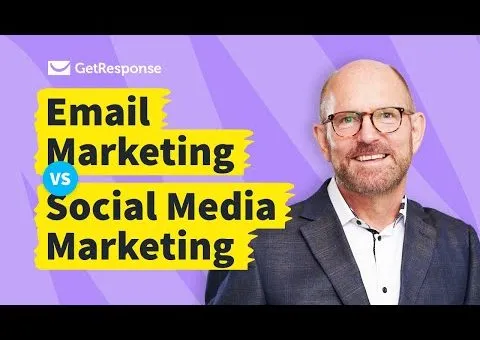
In today’s digital age, the importance of digital marketing cannot be overstated. With the shift towards online platforms and the increasing reliance on technology, businesses have recognized the need to adapt their marketing strategies to reach their target audience effectively. Two key components of digital marketing are email marketing and social media marketing. These channels have become essential tools for businesses to connect with their customers, build brand awareness, and drive sales.
Email Marketing: Pros and Cons
Email marketing has been a staple in the digital marketing world for many years. It offers several advantages, such as cost-effectiveness, high ROI, and the ability to reach a large audience. With email marketing, businesses can send personalized messages directly to their customers’ inboxes, allowing for targeted communication and increased engagement.
However, there are also some disadvantages to email marketing. One of the main challenges is deliverability. With spam filters becoming more sophisticated, it can be difficult for businesses to ensure that their emails reach their intended recipients. Additionally, email open rates and click-through rates can vary significantly, making it crucial for businesses to continually optimize their email campaigns to achieve desired results.
Social Media Marketing: Pros and Cons
Social media marketing has gained immense popularity in recent years due to its ability to reach a vast audience and foster engagement. With platforms like Facebook, Instagram, Twitter, and LinkedIn, businesses can connect with their target market on a more personal level. Social media marketing allows for real-time interaction, enabling businesses to respond promptly to customer inquiries and feedback.
One of the advantages of social media marketing is its cost-effectiveness. Compared to traditional advertising methods, social media platforms offer affordable advertising options that can be tailored to specific demographics and interests. Additionally, social media provides valuable insights into customer behavior and preferences through analytics tools.
However, social media marketing also has its drawbacks. One challenge is the constantly evolving algorithms of social media platforms, which can impact the visibility of businesses’ content. Moreover, managing multiple social media accounts and staying active on various platforms can be time-consuming and resource-intensive.
The Importance of Targeting and Personalization
Targeting and personalization play a crucial role in both email marketing and social media marketing. By understanding their target audience’s demographics, interests, and preferences, businesses can tailor their messages to resonate with their customers effectively.
In email marketing, targeting allows businesses to segment their email lists based on various criteria, such as age, location, purchase history, and engagement level. This segmentation enables businesses to send relevant content to specific groups of customers, increasing the likelihood of engagement and conversion.
Similarly, social media platforms offer advanced targeting options that allow businesses to reach their desired audience based on demographics, interests, behaviors, and more. By utilizing these targeting capabilities, businesses can ensure that their content is seen by the right people at the right time.
Personalization is another essential aspect of both email marketing and social media marketing. By addressing customers by their names and tailoring content to their specific needs and preferences, businesses can create a more personalized experience that fosters customer loyalty and engagement.
Measuring ROI: Which Channel is More Effective?
Measuring return on investment (ROI) is crucial for determining the effectiveness of marketing campaigns. Both email marketing and social media marketing offer various metrics that can be used to measure RO
In email marketing, metrics such as open rates, click-through rates, conversion rates, and revenue generated can provide insights into the success of a campaign. These metrics allow businesses to track the performance of their emails and make data-driven decisions to optimize future campaigns.
Social media marketing also provides valuable metrics for measuring RO
Metrics such as reach, engagement rate, click-through rate, conversions, and revenue generated can help businesses assess the effectiveness of their social media efforts. Additionally, social media platforms offer analytics tools that provide insights into audience demographics, interests, and behaviors, allowing businesses to refine their targeting and content strategies.
Determining which channel is more effective for a business depends on various factors, such as the target audience, industry, and marketing objectives. It is essential for businesses to analyze the metrics and data from both email marketing and social media marketing to make informed decisions about resource allocation and campaign optimization.
The Role of Content in Email and Social Media Marketing
Content is a critical component of both email marketing and social media marketing. High-quality, engaging content is essential for capturing the attention of customers and driving desired actions.
In email marketing, businesses need to create compelling subject lines that entice recipients to open their emails. The body of the email should provide valuable information or offers that encourage recipients to click through to the website or take a specific action. Visual elements such as images and videos can also enhance the effectiveness of email content.
Similarly, social media marketing relies heavily on engaging content to capture the attention of users. Businesses need to create visually appealing posts that stand out in users’ feeds. The content should be informative, entertaining, or inspiring, depending on the brand’s tone and target audience. Utilizing various formats such as images, videos, infographics, and live streams can help businesses diversify their content and keep their audience engaged.
The Power of Social Media Influencers
Social media influencers have become a powerful force in the world of marketing. These individuals have built large followings on social media platforms and have the ability to influence their followers’ purchasing decisions.
Collaborating with social media influencers can be highly beneficial for businesses. By partnering with influencers who align with their brand values and target audience, businesses can leverage the influencers’ credibility and reach to promote their products or services. Influencer marketing allows businesses to tap into new audiences, increase brand awareness, and drive sales.
When working with social media influencers, it is crucial for businesses to establish clear objectives, define expectations, and ensure that the partnership aligns with their brand image. Authenticity and transparency are key in influencer marketing, as consumers value genuine recommendations from influencers they trust.
The Benefits of Integrating Email and Social Media Marketing
Integrating email marketing and social media marketing can provide businesses with a holistic approach to reaching and engaging their target audience. By combining the strengths of both channels, businesses can maximize their marketing efforts and achieve better results.
One way to integrate email and social media marketing is by including social media icons and links in email campaigns. This allows recipients to easily connect with the business on social media platforms, increasing the likelihood of engagement and brand loyalty. Conversely, businesses can also promote their email newsletters or exclusive offers on social media to encourage followers to subscribe to their email list.
Another way to integrate the two channels is by repurposing content. Businesses can repurpose their email content into social media posts or vice versa, ensuring consistent messaging across platforms. This not only saves time but also allows businesses to reach a wider audience and reinforce their brand identity.
The Impact of GDPR and Privacy Concerns
The General Data Protection Regulation (GDPR) has had a significant impact on email marketing and social media marketing. GDPR is a regulation that aims to protect individuals’ personal data and give them control over how their data is used.
In email marketing, GDPR requires businesses to obtain explicit consent from individuals before sending them marketing emails. This means that businesses need to have a clear opt-in process and provide recipients with the option to unsubscribe at any time. Additionally, businesses must ensure that they handle personal data securely and comply with GDPR’s requirements for data protection.
Social media platforms have also implemented measures to address privacy concerns. For example, Facebook has updated its privacy settings to give users more control over their data and how it is shared with third-party apps. Businesses need to be aware of these privacy settings and ensure that their social media marketing practices align with users’ privacy preferences.
Choosing the Right Channel for Your Business
Choosing the right channel for your business depends on several factors, including your target audience, marketing objectives, and available resources. It is essential to consider these factors when making a decision to ensure that your marketing efforts are effective and efficient.
If your target audience consists of older individuals who are more likely to check their emails regularly, email marketing may be the more suitable channel. On the other hand, if your target audience is younger and more active on social media platforms, social media marketing may be the better choice.
Additionally, consider your marketing objectives. If you want to build brand awareness and engage with your audience in real-time, social media marketing may be the way to go. However, if your goal is to nurture leads and drive conversions, email marketing may be more effective.
Lastly, consider your available resources. Email marketing requires a reliable email service provider and a well-maintained email list. Social media marketing requires consistent content creation and management of multiple social media accounts. Assess your resources and capabilities to determine which channel is more feasible for your business.
The Future of Email and Social Media Marketing
The future of email and social media marketing is constantly evolving as technology advances and consumer behavior changes. It is crucial for businesses to stay up-to-date with trends and changes in the industry to remain competitive and effectively reach their target audience.
As technology continues to advance, personalization will become even more critical in both email marketing and social media marketing. Businesses will need to leverage data and analytics to deliver highly targeted and personalized content that resonates with their customers.
Additionally, the rise of artificial intelligence (AI) and automation will play a significant role in the future of email and social media marketing. AI-powered tools can help businesses automate tasks, analyze data, and optimize campaigns, allowing for more efficient and effective marketing strategies.
In conclusion, email marketing and social media marketing are essential components of a successful digital marketing strategy. By understanding the pros and cons of each channel, leveraging targeting and personalization, measuring ROI, creating compelling content, working with influencers, integrating the two channels, addressing privacy concerns, and choosing the right channel for their business, businesses can maximize their marketing efforts and achieve their goals in the digital landscape.






